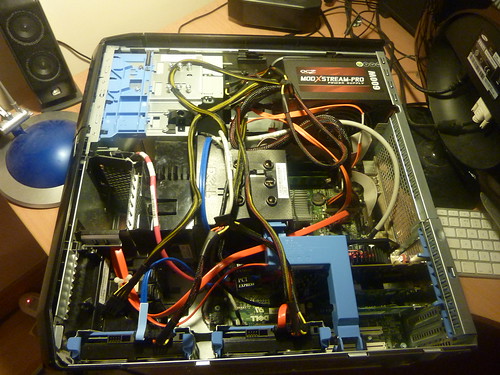 By:Sean MacEntee
By:Sean MacEnteeDuring my time in Technology for Education has been frustrating, rewarding and very informative. During this semester it took some time to get into the class participation but after I got into the subeject it was a lot easier but I had my own procrastination issues which all students have. When I become an educator that is the number one subject I will address in the class and nip that in the bud. In the time I have spent in the class we have used a number of different website and technology tools to help us understand what we can use when we become educators. A couple of examples, one of the most interesting tools we used was the Tracking Device, this device we used on a scavenger hunt, we were hunting for answers and we had our groups we used the device to help locate the questions we had to answer. It was frustrating just for the fact it took awhile to find the questions because they were hidden in a public place it would be moved or just misplaced. But that activity we did required team work and was able to get us the students out of the classrooms a lot of children benefit from this method it gets them involved with the lesson and they have alot of fun. This is a great benefit for the Kinesthetic Learners. If I had the tools for my classroom I would defiantly use it. Also one of the websites Delicious was a huge technology tool that I have come to love in the class. I am defiantly going to use this with my class because this is one thing I hated in school was having to remember what websites I have visited with this tool they can benefit from this as well. The Collaborative Lesson Plan was fun and interesting because when we individually work on a lesson plan we only listen to our idea and what we want to do but with the group we were able to put ideas together and listen to each other and what the others could do with their own ideas. But then of course the difficult part of that project is the whole idea of putting your thoughts together everyone has different ideas and subjects that they wanted to teach. Working in groups is a big thing for teaching because you work with a team of other teachers in a school and you need to learn to get along. The Instructional wiki was easier because everyone had their own part in which they had to finish but then the pressure of hoping that the other person did their part because if they don't do their part it reflects badly on the whole group and looks bad. Both of the projects involved team work and being able to collaborate ideas. The big differences is that with the instructional wiki it was more independent group working and most of the communication was over the internet. The collaborative lesson plan was more interaction with the group and you all had to come to one idea that would work for everyone. Similarities was that everyone was working toward one goal of a successful project. This class was a great learning experiences and I can not wait to be able to learn more as I go through school and to be able to teach the students what I know.
References
- Working in Groups, Retrieved Dec,05,2012 ,http://www.deakin.edu.au/current-students/study-support/study-skills/handouts/groups.php
- Kinsesthetic Learning, Retrieved Dec, 03,2012, :http://serc.carleton.edu/NAGTWorkshops/miralogy/xtlsymmetry/kinesthetics.html
- Delicious, Retrieved Dec 05,2012,http://www.delicious.com/mgarner1
 Photo By Comingstobrazil TechTool:
Photo By Comingstobrazil TechTool: 


